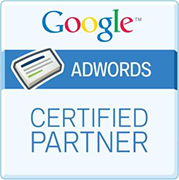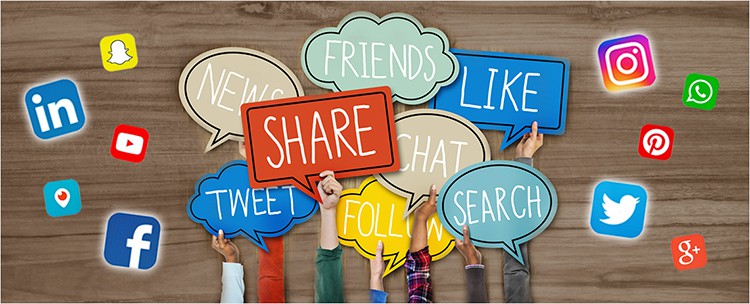In a rapidly changing and growing social landscape, social media marketing has become a critical way for small businesses to differentiate themselves and connect with their customers.
Have you thrown yourself (and your business) head-first into social networking? Or have you shied away from what can be seen as a fairly intimidating array of always-increasing social platform options?
As a business owner, you don’t have infinite time and resources to be everything to everyone. You can’t afford to be on every social media platform, but you can’t afford to ignore them either. What you need to do is to choose the platforms that work for you, your business objectives, and your audience needs, and then to engage on them effectively.
But where to even start? How to know which platforms are relevant to your business and target market?
To help you work out which social media platforms are best suited to you, we’ve provided an overview of four of the most popular.
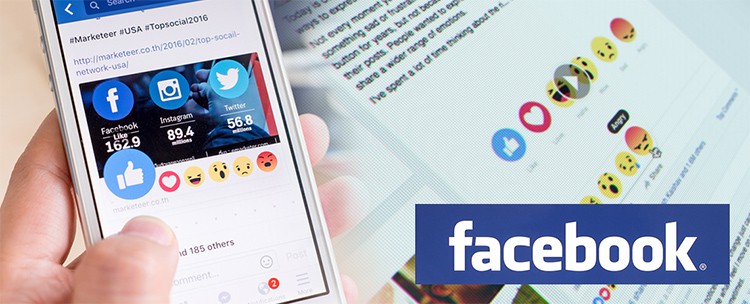
With over 1.59 billion active users, Facebook is the largest of any social network, and one of the most powerful. In its twelve-year history, it has become a seemingly permanent fixture of the daily online experience. Nearly half of all Facebook users are active each day.
Facebook’s sheer size is a positive draw for any business, big or small, because of the general assumption that most people are on it.
Unlike Twitter, Facebook also lets you choose what to look at and what to share, so it allows for a more specifically targeted, customised approach.
At its core, Facebook is about long-term commitment and building relationships. However, there is also a considerable amount of immediacy - you can reply directly and instantly to comments or questions, and receive responses to updates immediately.
Main purpose:
Builds brand loyalty and reputation. Establishes your business as an authority through interesting, informational content.
Attributes:
- Reaches a variety of audience segments with the one post.
- Offers opportunities to create advertisements to drive traffic to your website and blog.
- Encourages dialogue and casual, personalised interaction with your audience.
- Ideal for sharing personal stories, testimonials and detailed information about your business.
Good for:
Any business can benefit from having a Facebook page. However, Facebook isn't really about selling – at least, not in an explicit sense (unless you’re using Facebook advertising). Your goal is to let customers get to know the people behind the logo - to personalise the customer experience, to increase awareness, and to establish trust.
Tips:
- Make sure that your contact information and opening hours are all current.
- Use images or videos in your updates. According to a study conducted by Quintly, these are the most engaging types of Facebook content.
- Boost your important posts. Boosted posts can help you reach wider audiences with greater accuracy.
- Optimise your profile.
- Be responsive to comments and messages. This will result in increased engagement and trust.
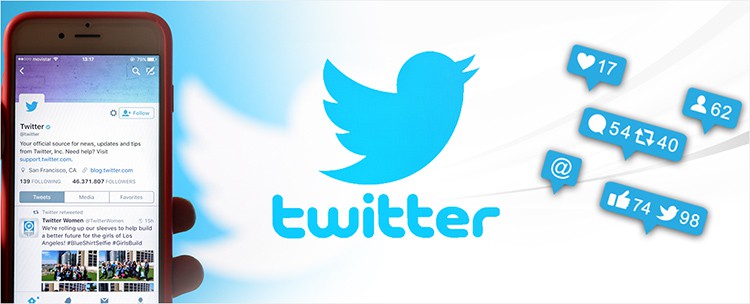
The average Twitter user has 208 followers, 307 Tweets, and spends 170 minutes on Twitter each day. This is a market segment full of potential. About half of Twitter users use it daily, and at least 29% of Twitter users are active several times a day.
Twitter isn’t so much a lead generation platform as it is about brand loyalty. For example, 85% of Twitter users “feel more connected” to a business after they follow them on Twitter.
Main purpose:
- Sharing breaking news and quick updates.
- Promoting new products, content, or brand contests.
- Collecting instant feedback from your audience.
Attributes:
- Great for people looking for quick information, company news, and immediate responses to questions about products or events.
- Focuses on creating dialogue and starting conversations with customers.
- Known for its hashtag (#) communication functionality.
- Best platform for PR/publicity purposes when traditional media does not respond.
- Not as simple as it might appear. With a limit of 140 characters, it is quite challenging to create something meaningful and of substance.
- Stands alone in its ability to create a huge, relevant audience quickly, but because you can’t target groups of followers with messages (at least, not yet), this can feel too generalised or non-specific.
- Great for forging initial connections that can lead to reliable reach on another platform like a blog or podcast.
- Essential for relationship-building with influencers and communication with your customers.
Good for:
- Providing a sense of immediacy. Twitter is a great tool for businesses that want to reach out in the moment and expect (and are ready for) people to reply. If you have breaking news, updates, questions for your followers, or if you want opinions now – or even need to announce a recall - Twitter is the way to reach out to people. It's for businesses that have things to say frequently and prefer to reach people directly.
- Businesses or sectors which are based around things that are happening right now – Twitter is inextricably connected to in-the-moment developments.
- Data found by a Pew Research Center Demographics of Key Social Networking Platforms study suggests that Twitter would be an ideal place for your business if your target audience tends towards a younger crowd.
Tips:
- Talk to people directly by using @theirname. This allows you to tighten and personalise your customer relationships.
- Add personality to your tweets. Twitter is a casual platform, and sounding like a robot isn’t going to do you any favours. Have a distinct voice – this will make you much more relatable and will help humanise your brand.
- Don’t make it all about you. Twitter shouldn’t be used as an endless stream of self-promotion. Avoid overly salesy, spammy content. Twitter is first and foremost a place to connect, learn and listen.

You may not think of LinkedIn as a social media platform like Facebook, Twitter and Instagram. But LinkedIn is a serious contender – it’s important to your business because it’s a dedicated business network.
According to Statista.com, towards the end of 2015, there were close to 400 million users on LinkedIn, all with the common goal: to connect on a deep, professional level.
However, an important thing to bear in mind is that LinkedIn is the platform for B2B marketing, not B2C marketing.
Main purpose:
Professional/business network creation and sharing. This is where the professional community engages, interacts, connects and refers. Frequently using for recruitment purposes.
Attributes:
- Great for reaching out to people and forging productive networks.
- Includes groups and discussions where you can discuss your interests, show that you're transparent, solicit advice, and ask and answer questions, establishing your expertise.
- Service providers are more prevalent than manufacturers or retailers, because it's easier to talk about what you do or what your business does, and it's not a very visual medium.
- Provides your business with the opportunity to tell your company’s story, engage with followers, share career opportunities, highlight specific
- Focused on work rather than play. Not the place to discuss your favourite TV shows. Most LinkedIn users are closely focused on their professional lives, looking for resources that can help them grow as professionals or help them grow their businesses.
Good for:
- B2B professionals.
- Job applicants and recruiters.
- Business development and career-building.
Tips:
- Make sure your information is current, interesting and engaging.
- Check everything over. Avoid spelling or grammatical errors and typos. This tends to look sloppy and unprofessional, and diminishes authority and trust.
- In addition to linking LinkedIn to your website, you can connect all of your social media profiles, including Twitter and Facebook, ensuring maximum impact.
- Participate in LinkedIn Answers. By establishing your authority as an industry expert, you are also establishing yourself as the go-to-person that business professionals will seek out.
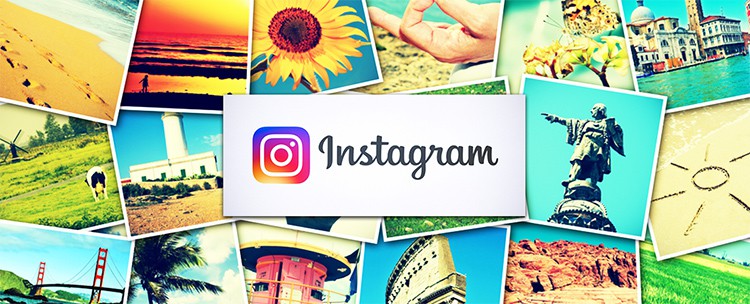
With over 400 million active accounts, Instagram is one of the most prominent and popular platforms for sharing visual content, enabling you to share photos, as well as short videos, with your followers.
Like Pinterest, Instagram taps into the increasing popularity of “visual marketing”, which harnesses that old but apt adage, “A picture is worth a thousand words”. Visual language has immense power to tap into a wealth of emotional responses.
Instagram is an increasingly popular platform for brands, and one of the reasons for this is that it is so easy to use. The premise is ridiculously simple: snap a picture and post. While this doesn’t necessarily mean that you should take random photos of your lunch and it expect it to go viral – putting some thought and creativity into images is vital here – it provides a lot of freedom and flexibility for engaging customers.
Main purpose:
An entire feed of visual stimulation, encouraging high levels of interactivity.
Attributes:
- With Instagram’s filters and editing options, you can be as creative as you like, adding style and personality to your images.
- Liking and commenting on other people’s photos is a great way of growing a substantial following.
- One of the key benefits of Instagram is that it can help you build trust and create emotional connections with your audience.
- Instagram enables you to share the day-to-day experiences of your business in an informal and casual but quite intimate way, thereby personalising and humanising your business.
- Basically provides a space for free advertising. Allows you to showcase your products or services in action, which can generate potentially massive exposure, and provides an opportunity to show off what you have to offer.
- Instagram is great in a pairing with Facebook or Twitter – these platforms work incredibly effectively and fluidly in tandem.
- High levels of engagement and visibility.
Good for:
- Businesses that lend themselves up to appealing, inspiring or interesting visual content – e.g. tattoo artists, hairdressers, architects, designers, etc.
- Particularly great for lifestyle, food, fashion, personalities and luxury brands.
- Businesses targeting the 18-29 age group.
Tips:
- Post high-quality images. It goes without saying.
- Include an Instagram feed on your website.
- Embed Instagram video in your blog or website.
- Make your images about your brand – your feed shouldn’t just consist of a pile of product or service-related photos. Tell a story behind your brand that allows people to make a connection. What is your team environment/culture like? What happens every day at your business? What does your brand stand for?
- Use #hashtags. Start by finding popular hashtags for your industry so that you are more likely to pop up in people’s searches. Think about what words your target market might be searching for that also apply to your photo.


